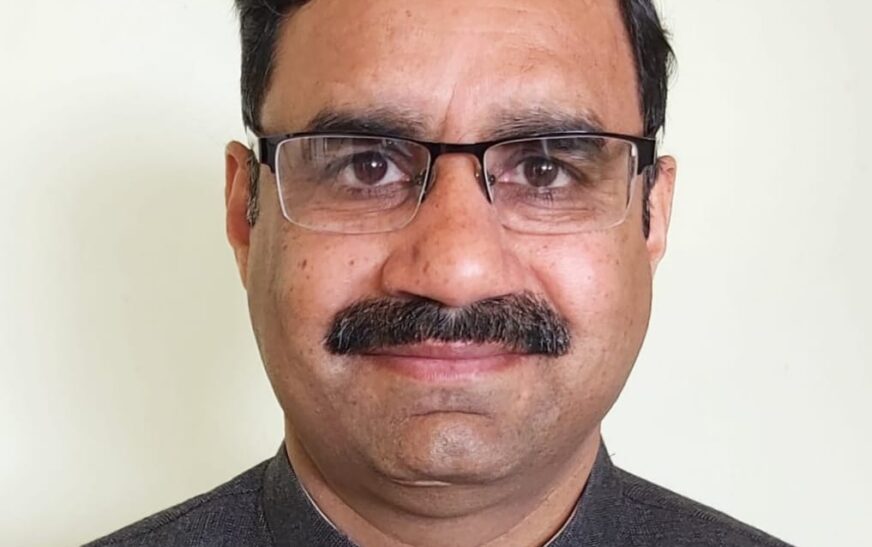In our ongoing pre-budget interview series on the Agriculture sector, we connect with Pushpendra Singh, President of Kisan Shakti Sangh. Recently, he was featured on our platform The Interview World in an interview titled ‘A Robust MSP Framework Can Ensure National Food Security‘. In the current discussion, Pushpendra Singh dives deep into the intricacies of fertilizer subsidies, illuminates the profound impact of these subsidies on farmers, and underscores the vital role of initiatives like free ration and crop insurance in sustaining agriculture.
Singh also provides invaluable insights into the PM-KISAN scheme, highlighting its pivotal support for farmers. Furthermore, the conversation confronts the critique often aimed at farm subsidies, juxtaposed with the stark contrast of unchallenged massive corporate loans. Here, we present the key takeaways that distill Singh’s perspective on these critical agricultural issues.
Q: How do you view the government’s fertilizer subsidies, and what impact do you believe they have on farmers?
A: The revised estimates (RE) for FY 2022-23 peg the fertilizer subsidy at a staggering Rs. 2.25 lakh crore, a sharp increase from the budgeted Rs. 2 lakh crore for the same period. Additionally, the geopolitical turmoil caused by the Russia-Ukraine war has attributed to this spike. In prior years, the subsidy was comfortably under Rs. 1 lakh crore. In essence, fertilizer prices have now plummeted, prompting an adjustment of the budget estimate (BE) for FY 2023-24 to Rs. 1.75 lakh crore.
The government determines the minimum support price (MSP) for various crops based on the Commission for Agricultural Costs and Prices (CACP) recommendations. The CACP calculates production costs using subsidized prices for fertilizers and other inputs, not their actual costs. This approach reduces the production cost by the value of the input subsidy, leading to a lower MSP set by the government.
This system of subsidized inputs ultimately lowers the prices farmers receive for their crops, benefiting consumers instead. For instance, if the production cost (C) is Rs. 1000/quintal without any subsidy, the MSP would be set at 1.5 times C, or Rs. 1500/quintal, assuming a 50 percent profit margin. However, if an input subsidy (S) of Rs. 200/quintal is applied, the CACP calculates the cost as (C-S), or Rs. 800/quintal. Consequently, the MSP is set at 1.5 times (C-S), or Rs. 1200/quintal. This effectively reduces the MSP by Rs. 300/quintal, or 1.5 times the subsidy amount S. Hence, a farmer subsidy of Rs. 200/quintal is transformed into a consumer subsidy of Rs. 300/quintal, providing no real benefit to farmers.
In reality, farmers lose 0.5 times the subsidy amount, or Rs. 100/quintal, from their earnings. Therefore, a Rs. 2 lakh crore fertilizer subsidy effectively becomes a Rs. 3 lakh crore consumer subsidy, with Rs. 1 lakh crore being taken directly from farmers’ pockets.
Q: How would the agricultural sector and farmers’ livelihoods be impacted if input subsidies were eliminated?
A: The cost of crops will escalate for consumers, as the CACP and farmers will inevitably pass on heightened input expenses. This underscores that all input subsidies—be it for fertilizers or power—are fundamentally consumer subsidies camouflaged as farmer support. Regrettably, many impoverished farmers remain unaware of this dynamic. To authentically support farmers through subsidies, the government should supply inputs at subsidized rates while basing production costs on actual market prices. This strategy ensures that subsidies directly benefit farmers.
Q: How have the free ration and crop insurance schemes affected the livelihood and economic stability of farmers?
A: The scheme offering a free ration of 5kg per person monthly benefits over 80 crore individuals across rural and urban areas, including farmers. A substantial chunk of the food subsidy, totaling around Rs. 2 lakh crore (Budget Estimates for FY 2023-24), supports these efforts. Similarly, the Budget Estimate for crop insurance stands at Rs. 13,625 crore for the same fiscal year.
Governments also provide land to industries and companies at highly discounted rates to spur investments, a strategy not typically classified as a subsidy. The free ration initiative aims to guarantee food security and combat malnutrition among the economically vulnerable. Simultaneously, crop insurance compensates farmers for crop losses, shielding them from financial peril and promoting sustainable agricultural practices.
Thus, the provision of free ration and crop insurance underscores the social imperative of a welfare state rather than merely serving as agricultural subsidies.
Q: How do the goals and initiatives discussed here align with the PM-KISAN scheme?
A: The PM-KISAN initiative channels Rs. 60,000 crore annually directly to about 10 crore farmer families, providing Rs. 6000 per family per year. This mirrors the government’s approach to the manufacturing sector through the Production-Linked Incentive (PLI) scheme, emphasizing incentives over subsidies. Classifying PM-KISAN under the PLI framework recognizes its pivotal role in incentivizing crop production among farmers.
Furthermore, farmers benefit from subsidized short-term crop loans up to Rs. 3 lakh, supported by a Rs. 23,000 crore budget allocation for 2023-24. In a parallel move, corporate tax reductions from 30% to 22% in 2019 aimed to boost corporate investment, yet failed to meet expectations. This policy adjustment resulted in a cumulative tax revenue loss of approximately Rs. 1.85 lakh crore over the initial two years, with ongoing annual impacts.
The accessible credit facilitated by these schemes supports farmer investments in crop cultivation and infrastructure. Thus, these initiatives serve as crucial incentives, enabling farmers to sustain agricultural production amidst operational challenges, ensuring food security for India’s 1.4 billion population.
Q: Despite corporate loans being significantly larger than farm loans, scrutiny rarely falls on corporate loans. In contrast, people often criticize even small subsidies for farmers as harmful to the economy. What is your perspective on this disparity?
A: Over the past five years, Rs 10 lakh crore in loans, largely to corporates, have been forgiven with minimal recovery. Meanwhile, critics decry providing even modest support to farmers as ‘heavy subsidization’. Yet, this supposed ‘farm subsidization’ is actually a profound ‘reverse subsidy’ from Indian farmers to consumers.
Ensuring food security is non-negotiable for any nation, essential for its sovereignty and security. Throughout history, millions have perished in famines due to starvation, illustrating the steep toll of food shortages. We must collectively shoulder the costs of food production, however high, to sustain global populations. Food is an absolute necessity, indispensable for survival.
Input subsidies, often mislabeled as farmer subsidies, are in reality consumer subsidies. We should also view additional support for farmers as an incentive to maintain food production for billions, not as a handout or giveaway. A nation that forsakes its farmers jeopardizes its own future. Moreover, supporting agriculture isn’t just an option—it’s an imperative for sustained national prosperity.










1 Comment
Nice
Comments are closed.